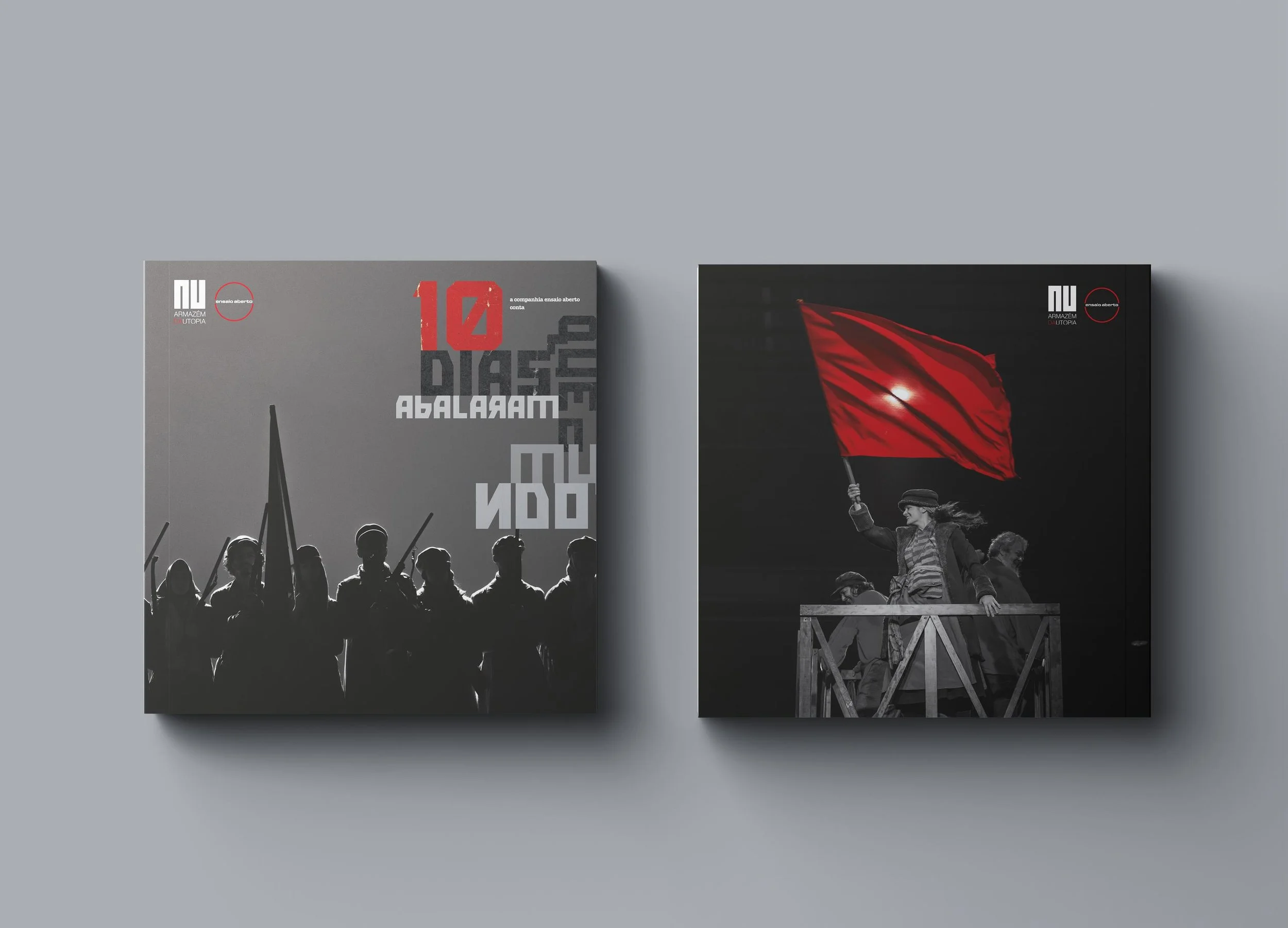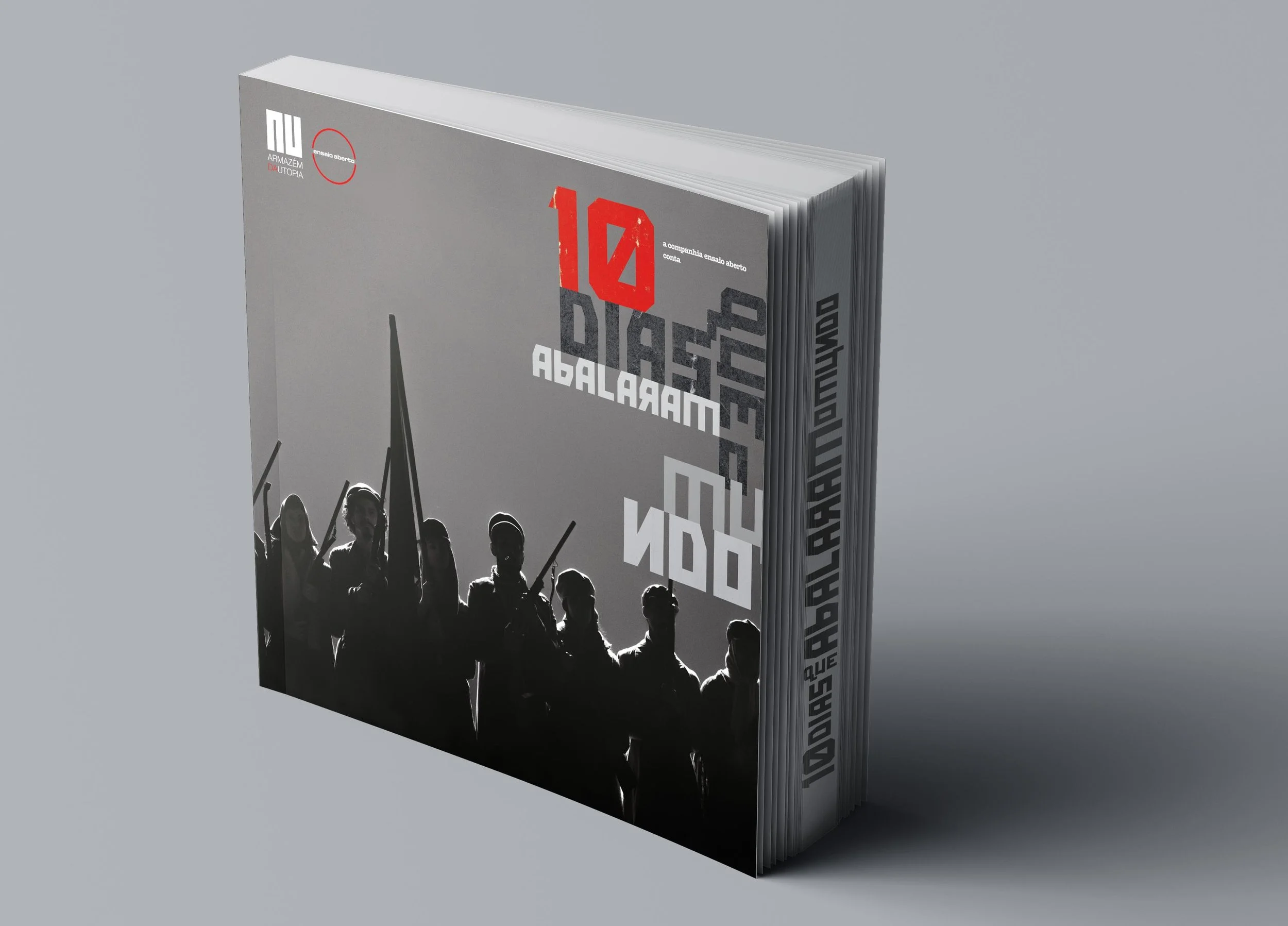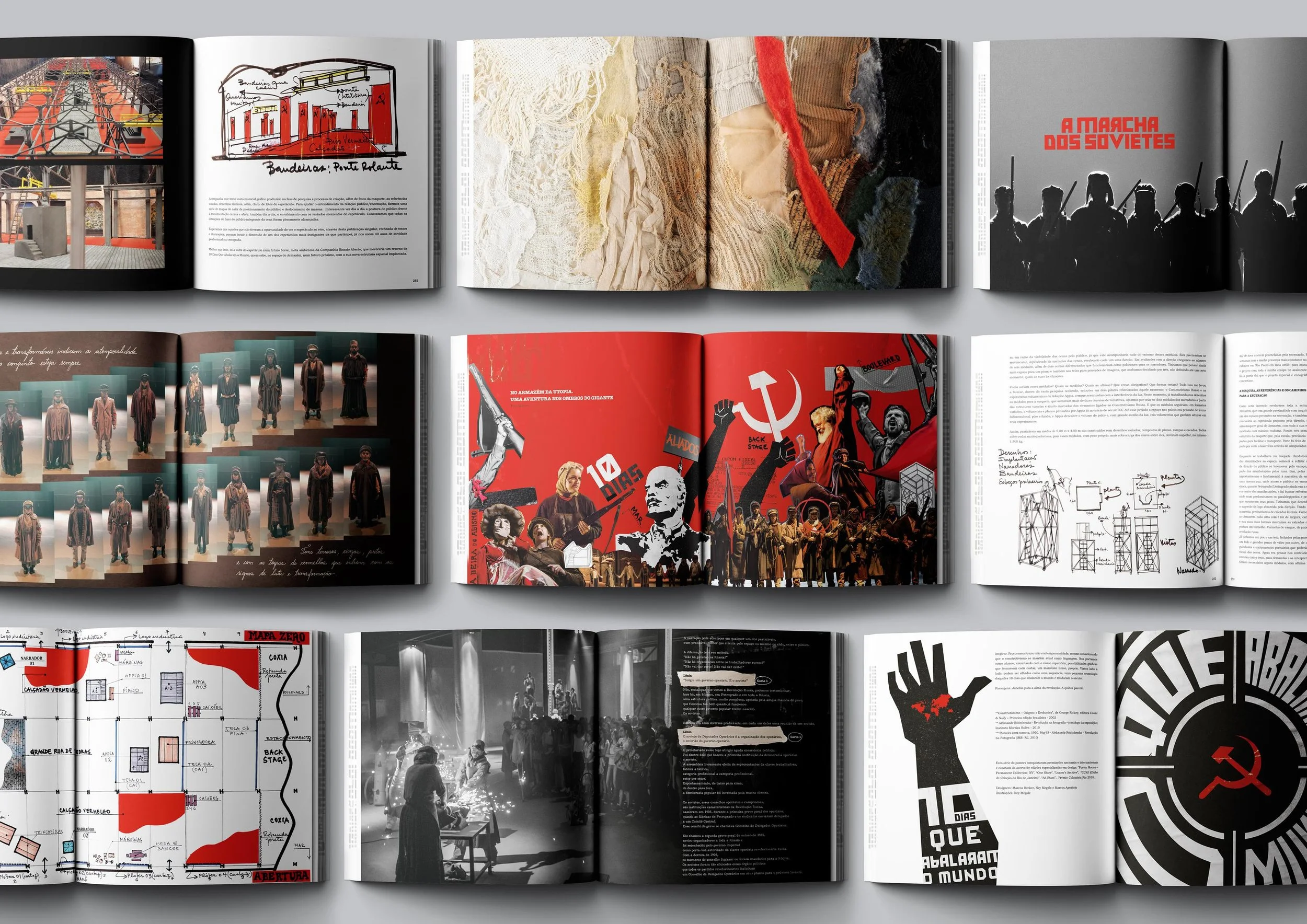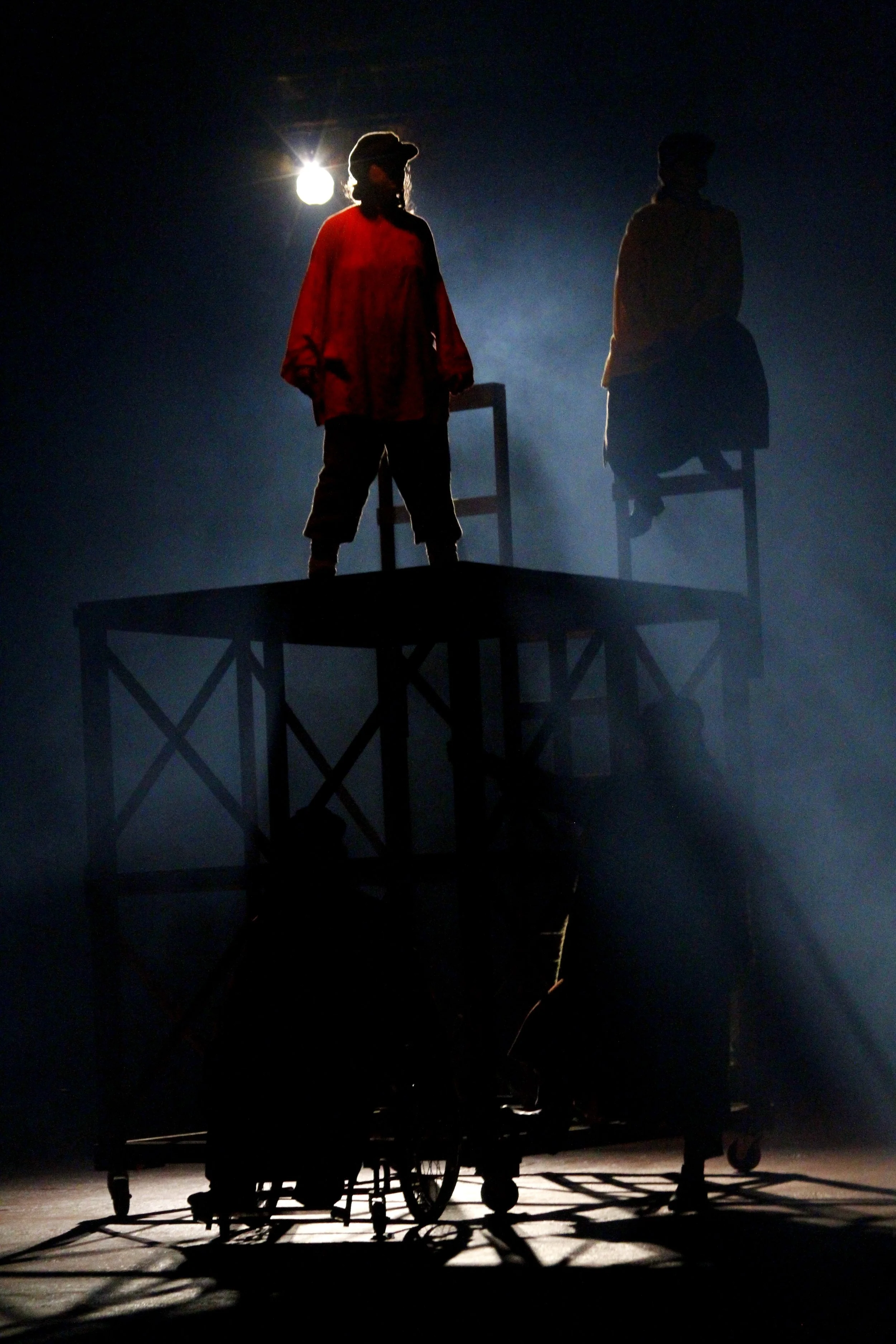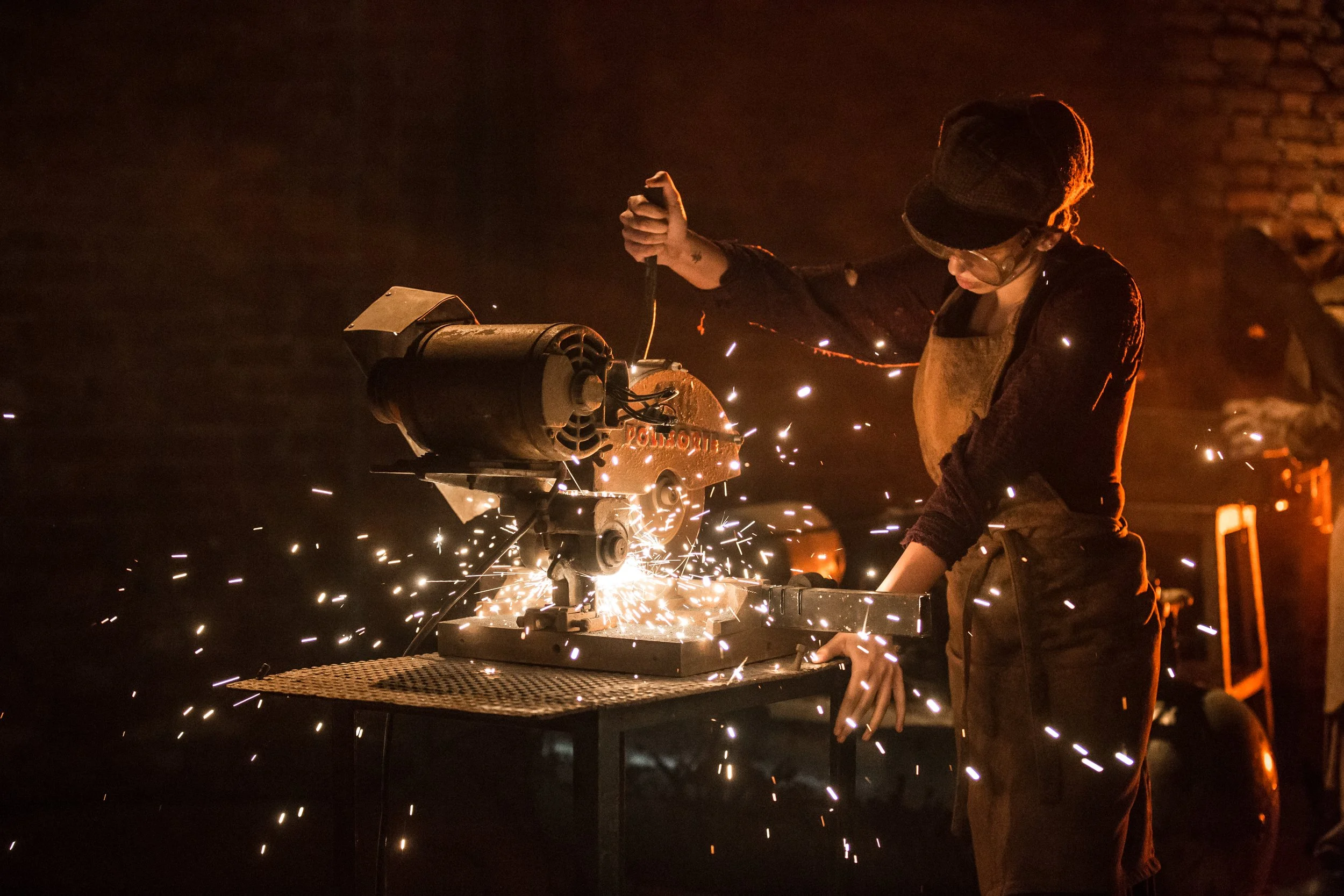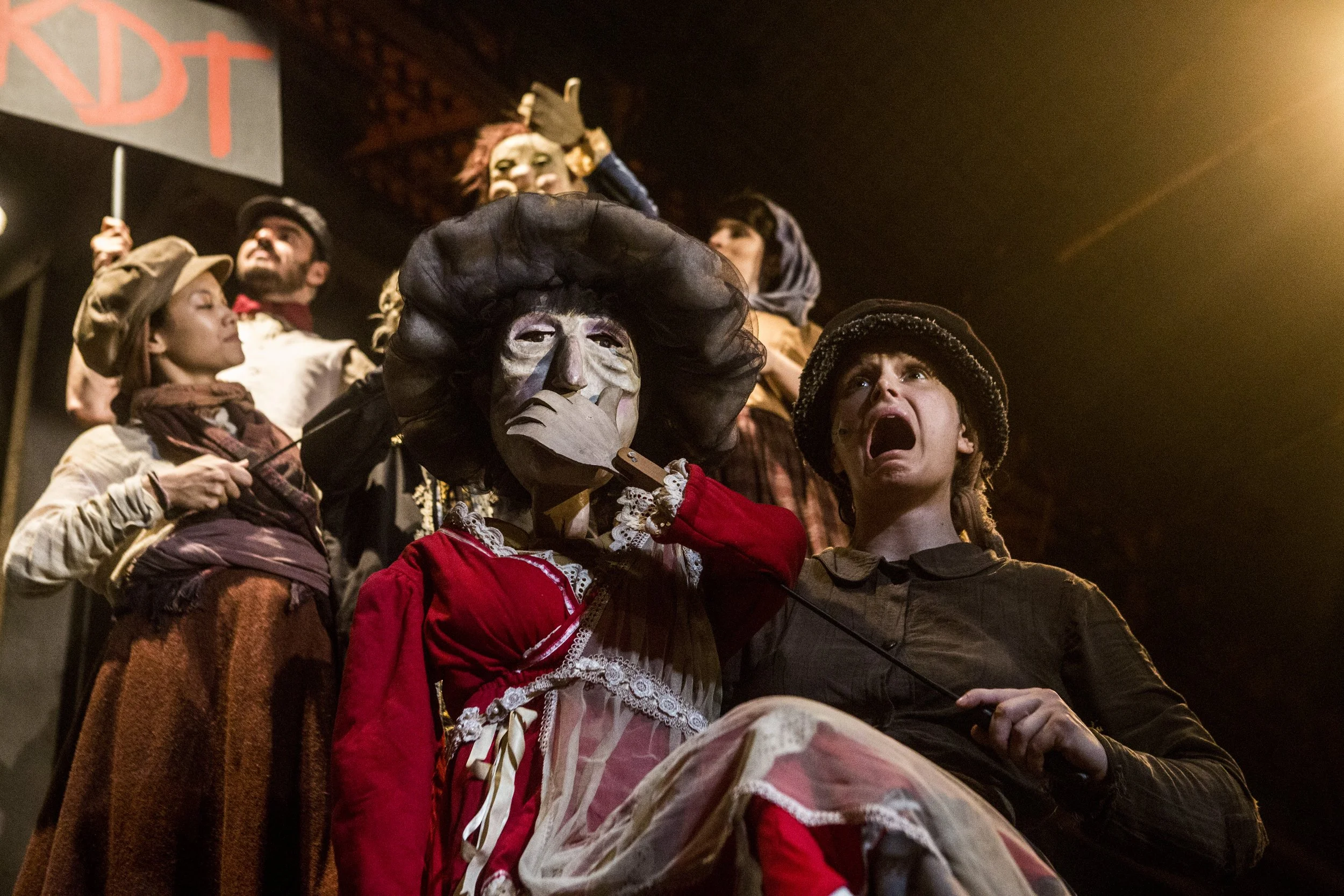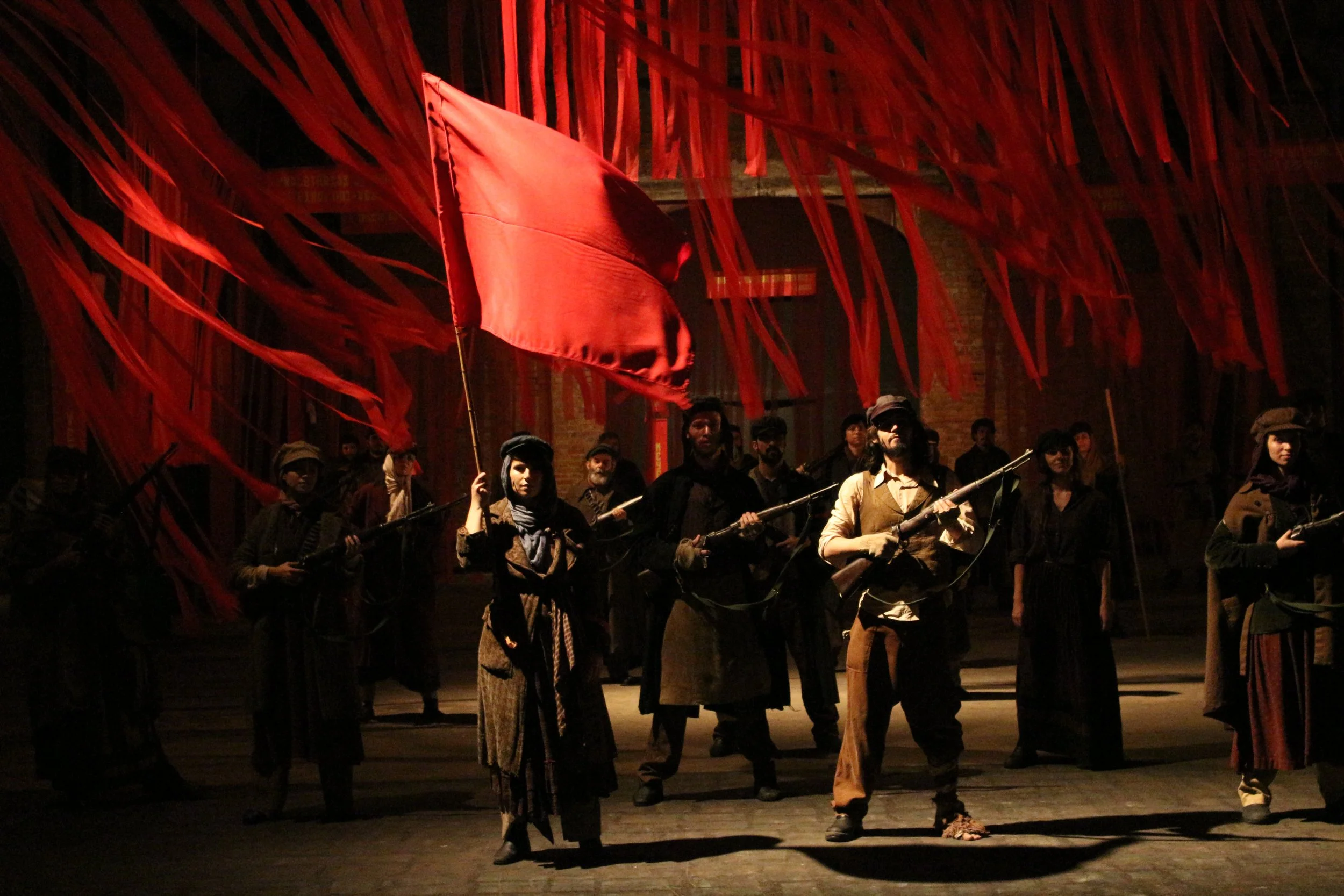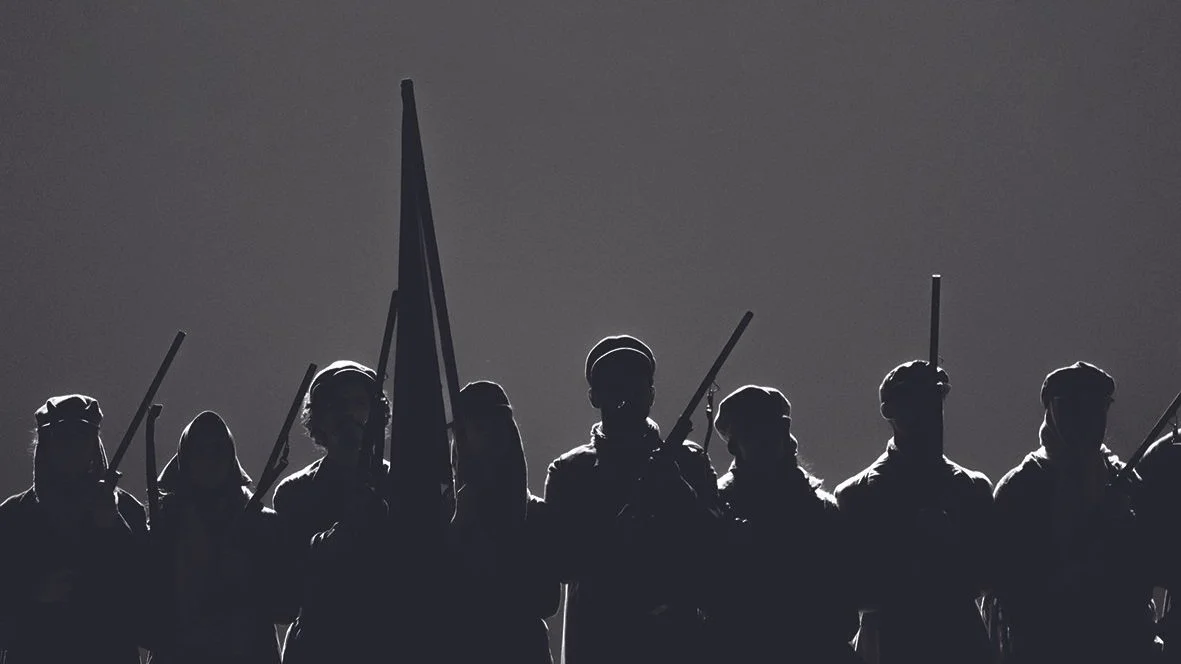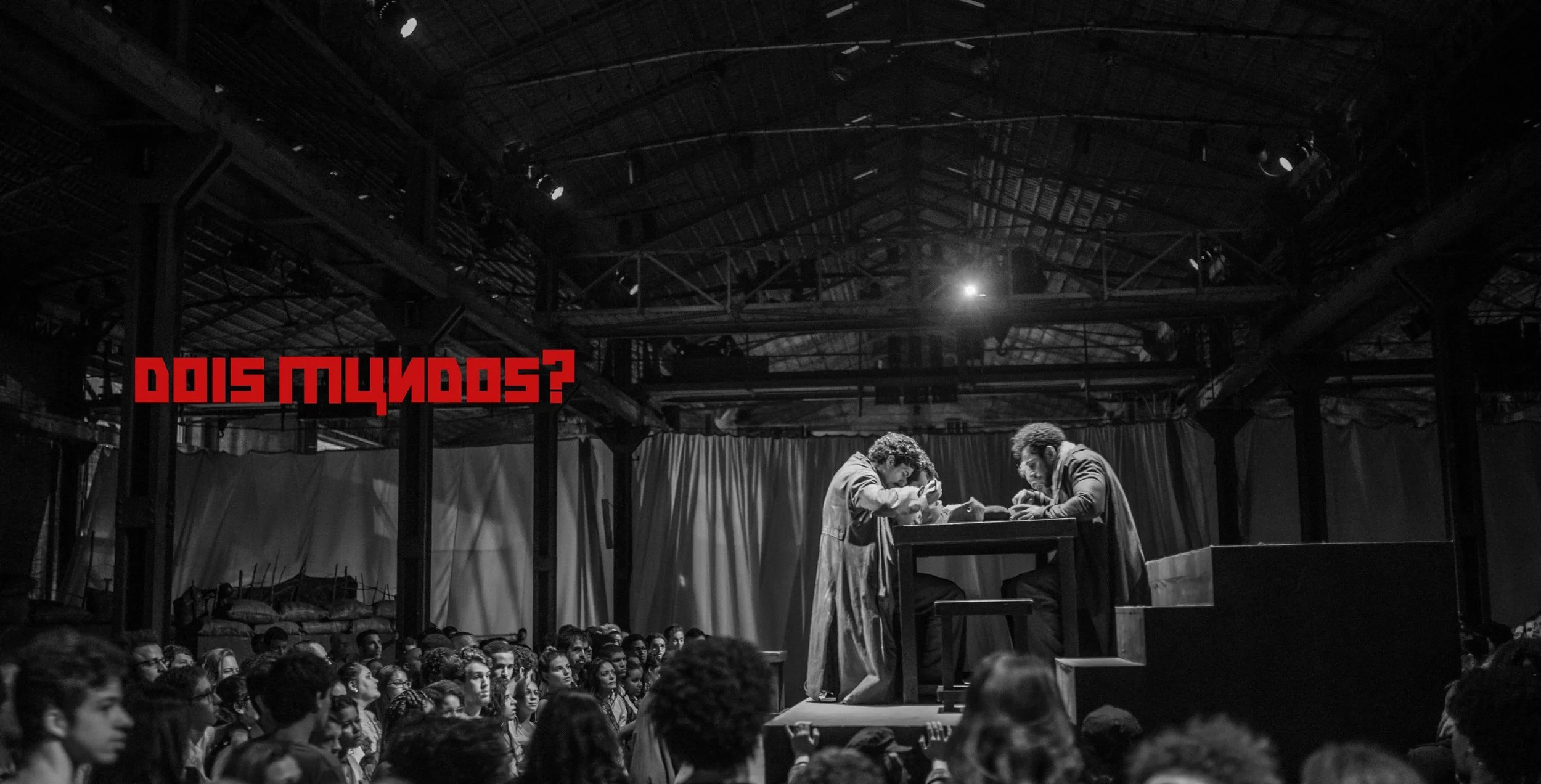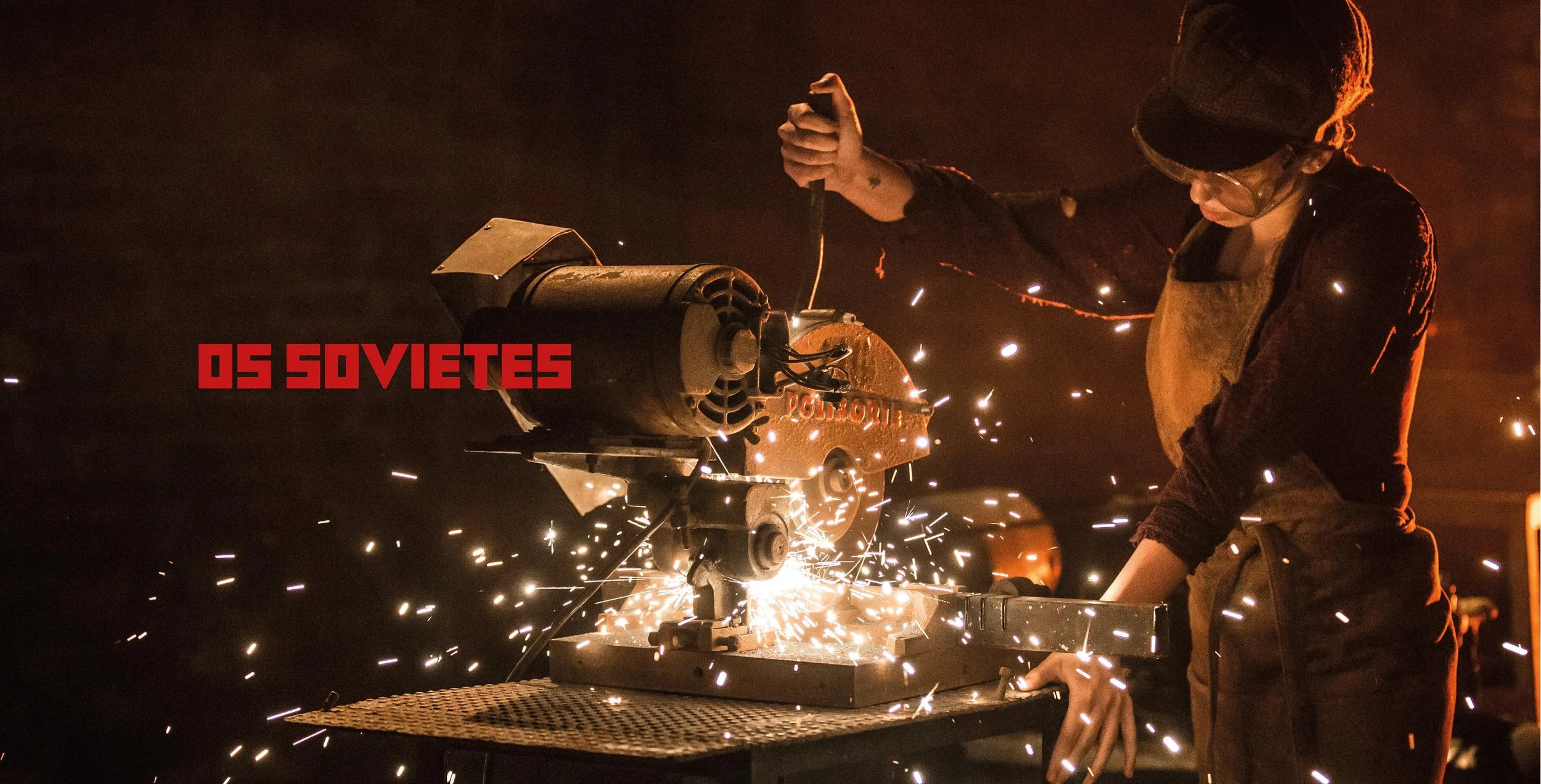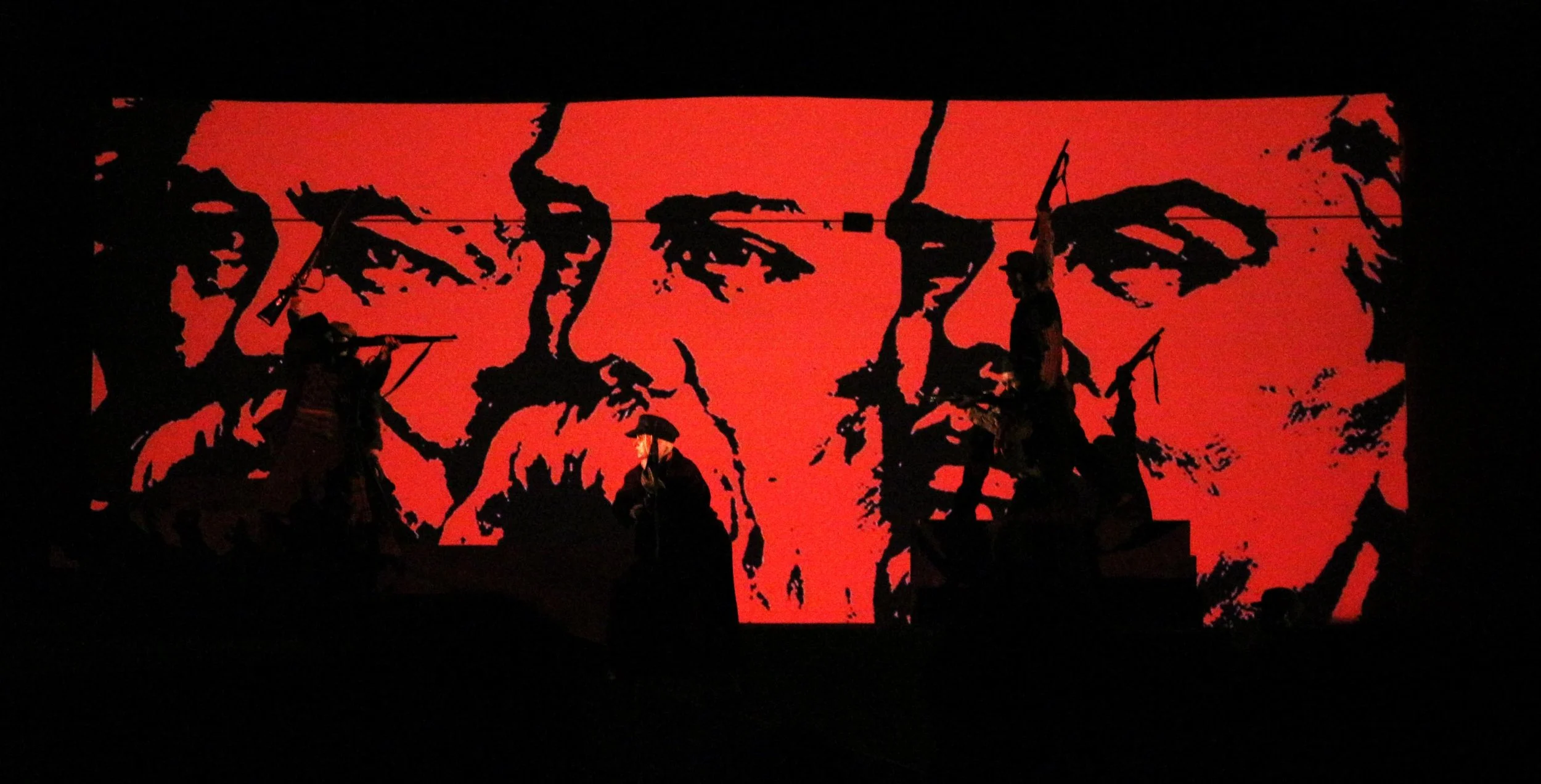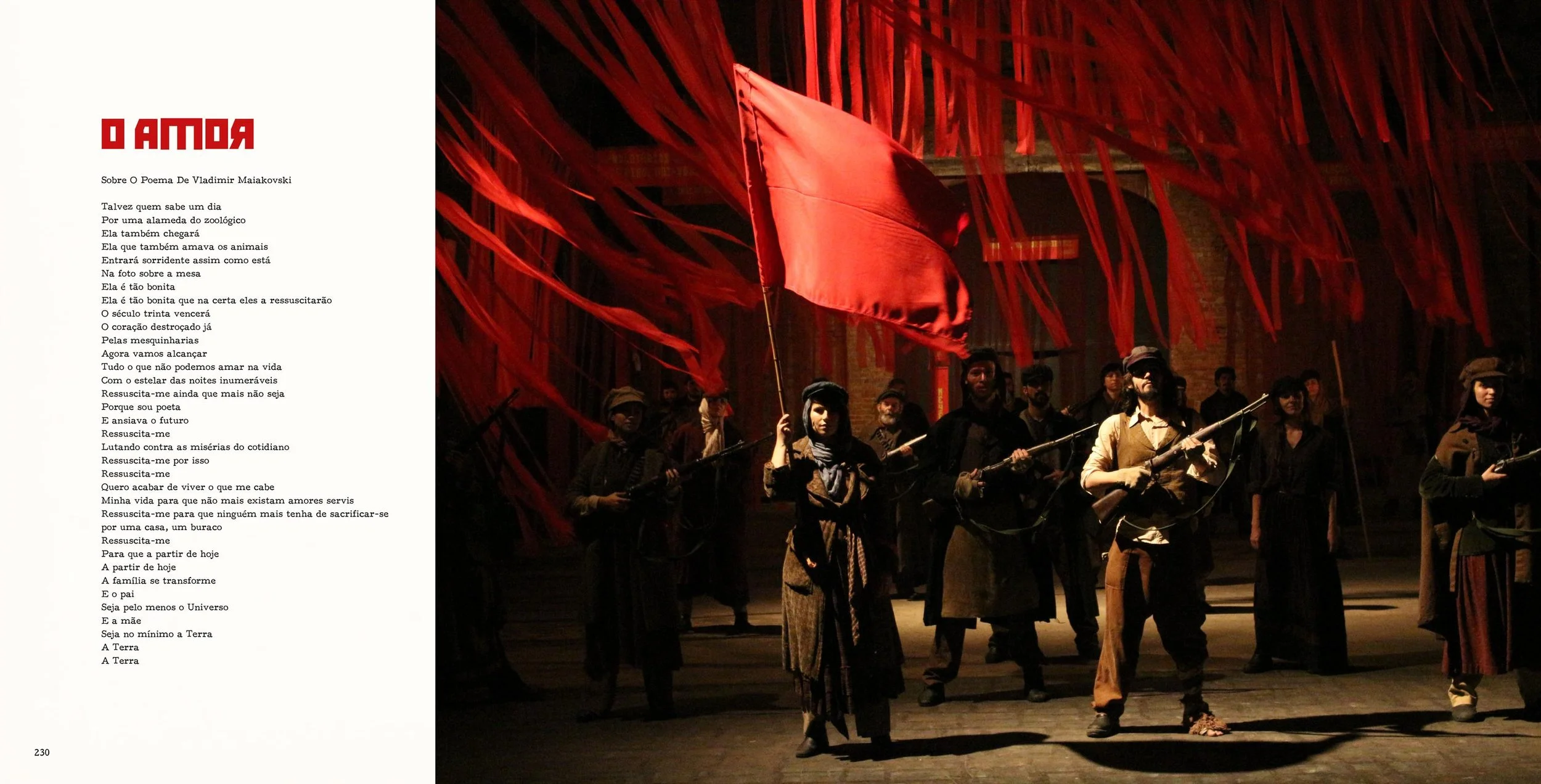10 Dias Que Abalaram o Mundo
Armazém da Utopia/ Companhia Ensaio Aberto
🥇 CCRJ Award - Gold in Branding - Book Cover
🥉 Prémios Lusófonos da Criatividade - Bronze in Editorial Design
Meu papel: Fui responsável por dar forma ao livro que documenta a peça. Organizei mais de 4.200 fotos tiradas por diferentes fotógrafos, selecionei o material, cataloguei capítulos e montei toda a estrutura do livro, que também diagramei. Em alguns momentos, precisei recorrer ao trabalho manual para alcançar o resultado visual que o projeto pedia.
Mergulhei na estética e no contexto histórico da peça para garantir que o livro transmitisse a mesma atmosfera do espetáculo. Estudei o olhar e a contribuição de cada integrante da montagem e traduzi isso visualmente nas páginas, como se cada pessoa também tivesse sua voz impressa ali. Foi um trabalho de pesquisa, sensibilidade e muito craft.
My role: I was responsible for shaping the book that documented the play “10 Days That Shook the World.” I organized over 4,200 photos taken by different photographers, curated and structured the content, and designed the entire layout. Some sections even required handcrafted solutions to bring the creative vision to life.
I immersed myself in the historical context and visual style of the production to make sure the book captured the atmosphere of the play. I also studied each contributor’s role and translated their perspectives into the design, so it felt like their voices were present on the pages. It was a process driven by research, sensitivity, and a deep attention to craft.
Briefing: A peça, “10 dias que abalaram o mundo”, foi baseada no livro de mesmo nome, de John Reed, que narra os acontecimentos em Petrogrado, durante a Revolução Russa. Após o sucesso da temporada, um livro precisou ser montado com o texto da peça, contando sobre seu processo criativo.
Execução: O livro foi dividido em dois. A primeira parte contém o roteiro completo e foi pensada para refletir a atmosfera da peça, na qual a área de atuação é totalmente cercada pelo público que ficava de pé. Mais de 4.200 fotos de mais de 15 fotógrafos, que capturaram os bastidores e a peça, foram selecionadas e organizadas cronologicamente. Na segunda parte, foi catalogado todo o conteúdo produzido, trazendo depoimentos contando todo o processo criativo, com fotos, anotações pessoais do diretor, pesquisa de figurinos, mapas de cenários e maquetes. A ideia era dar aos leitores a sensação de que estavam se aprofundando na mente dos criadores.
Resultados: O livro foi entregue a personalidades, público especializado e crítica literária. Muito elogiado pela crítica, entrando para a história da companhia. Hoje faz parte do acervo permanente do Museu das Forças Armadas e da Biblioteca do Congresso Nacional. E está sendo usado nas escolas brasileiras para ensinar aos alunos a história da revolução por meio da arte.
Brief: The play, “10 days that shook the world”, was based on the book of the same name, by John Reed, which narrates the events in Petrograd, during the Russian Revolution. After the season's success, a book needed to be put together with the play's text and telling about its creative process.
Execution: The book has been divided into two. The first part contains the complete script, and was designed to reflect the atmosphere of the play, in which the acting area is completely surrounded by the audience who is standing. Over 4200 photos from more than 15 photographers, who captured the backstage and the play, have been selected and arranged chronologically. In the second part, all the creative content produced was cataloged, bringing testimonials recounting all the creative process, with photos, creator's personal notes, costume research, scenery maps and mockups. The idea was to give readers the feeling that they were getting deeper into the creators minds.
Results: The book was delivered to personalities, specialized audience and literary critics. Much praised by the critics, entering to the history of the company. It's now part of the permanent collection of the Museum of the Armed Forces and the Library of National Congress. And it's being used at Brazilians schools to teach students the history of the revolution through art.
